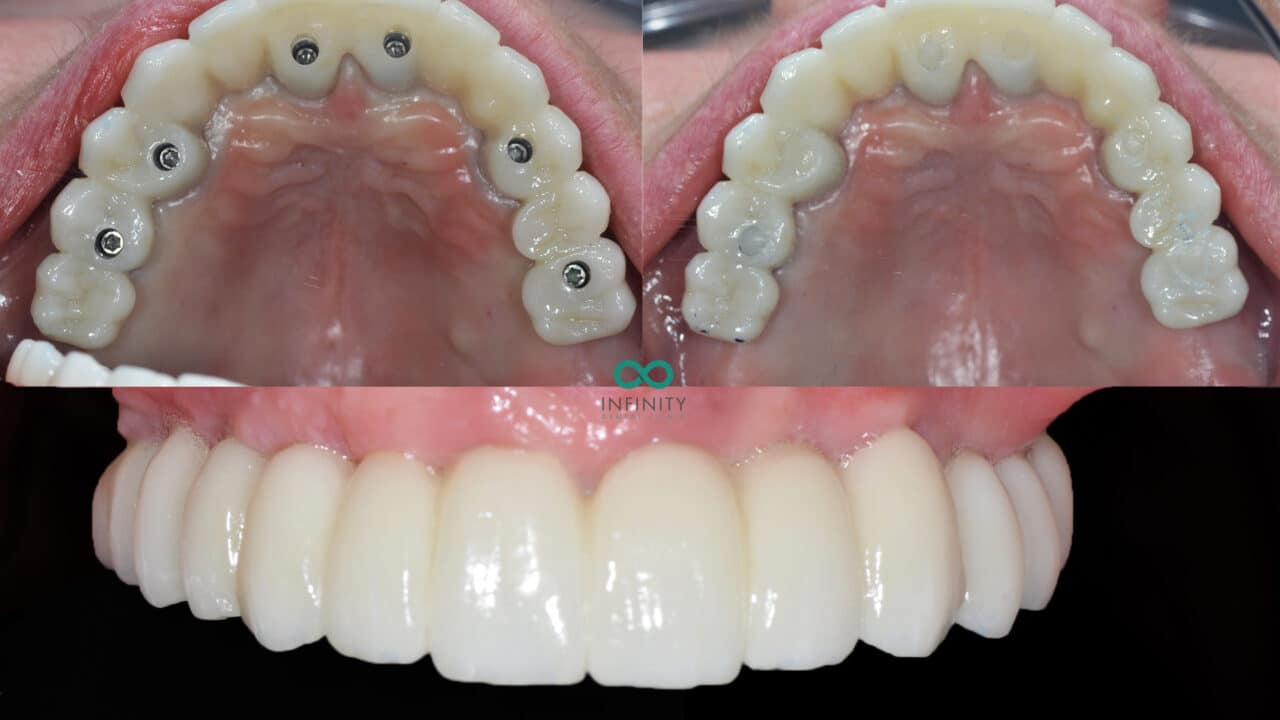All about Dental Sense
Table of ContentsThe Buzz on Dental SenseDental Sense for BeginnersFacts About Dental Sense RevealedTop Guidelines Of Dental Sense
are medical gadgets surgically implanted into the jaw to bring back a person's capacity to eat or their look. They provide assistance for synthetic (fake) teeth, such as crowns, bridges, or dentures. When a tooth is lost as a result of injury or condition, an individual can experience complications such as fast bone loss, malfunctioning speech, or adjustments to chewing patterns that cause discomfort.Oral implant systems include an oral implant body and oral implant abutment and may also include an abutment addiction screw. Dental implants. The oral implant body is surgically inserted in the jawbone in place of the tooth's origin. The oral implant abutment is typically affixed to the dental implant body by the abutment fixation screw and prolongs with gum tissues into the mouth to support the affixed fabricated teeth
(https://pxhere.com/en/photographer-me/4492670)Structure of The Dental Implant System choosing oral implants, speak to your oral service provider regarding the possible advantages and risks, and whether you are a candidate for the treatment. Points to consider: Your general health and wellness is an essential consider establishing whether you are an excellent candidate for oral implants, for how long it will take to heal, and the length of time the implant might stay in place.
Smoking cigarettes may influence the recovery procedure and lower the long-term success of the dental implant. The healing process for the implant body might take a number of months or longer, during which time you generally have a short-term abutment instead of the tooth. the oral implant treatment: Very carefully follow the dental hygiene guidelines provided to you by your oral copyright.
Get This Report on Dental Sense
Implant failing can result in the demand for one more surgery to deal with or change the dental implant system. Restores the capacity to chew Restores aesthetic look Assists maintain the jawbone from reducing as a result of bone loss Protects the health and wellness of the surrounding bone and periodontals Aids keep adjacent (close-by) teeth steady Enhances quality of life Damage to surrounding natural teeth throughout dental implant placement Injury to the surrounding tissues during surgical treatment, such as sinus opening Injury during surgical treatment (for instance, fracture of bordering jawbone) Poor feature, such as feeling like the teeth do not attack with each other usually A sensation that the tooth hangs or turning in place resulting from a joint screw loosening Implant body failing (looseness of the implant body) because of systemic infection, which may be more probable in patients with unchecked diabetes mellitus because of neighborhood infection in bone and periodontals sustaining the dental implant body as a result of delayed recovery, which might be extra most likely in clients that smoke Problem cleaning the gum tissues around the implant, resulting in inadequate dental health Untreated periodontal condition Post-surgical tingling because of nerve impingement or damage Constantly inform healthcare providers and imaging technicians that you have oral implants before any kind of magnetic vibration imaging (MRI) or x-ray procedures.
FDA is not knowledgeable about any type of negative occasions reported for MRI or x-ray procedures with oral implants. Dental implants systems are commonly constructed from products that follow international agreement criteria of the International Company for Standardization (ISO) or ASTM International. These requirements have information of what makes a safe material.

A dental implant is a structure that changes a missing tooth. With screw-like devices, the specialist inserts a dental implant right into the jawbone, and it acts as an anchor for a fabricated tooth, called a crown.
Our Dental Sense Ideas
Some individuals are not qualified for oral implant surgical procedure. It is for dental cosmetic surgeons to operate people with: intense illnessuncontrollable metabolic diseasebone or soft tissue illness or infectionIf these issues are fixed, a person can have the surgery. In, dental surgeons avoid operating people with: If people with any of the above go through oral implant surgical procedure, there is a greater risk of the implant stopping working.

Oral dental implant surgery is an individualized process. It's not the exact same for everyone. The adhering to gives a basic review of what you can expect your dentist, oral surgeon, periodontist or prosthodontist to do: Position the dental implant surgically. Give you time to recover. Attach the article and last crown, bridge or denture.
Next off, your doctor will carefully put the dental implant right into your jaw. Your cosmetic surgeon will reposition your gum tissues and shut the laceration with stitches. If your implant is near the front of your mouth, your dental professional will certainly make a short-term tooth for you to wear until you recover. In this way, you won't have a void in your smile while you recuperate.
Indicators on Dental Sense You Should Know
Your service provider can tell you what to expect in your circumstance. Throughout the healing stage, your jawbone should fuse to the oral implant. This process, called osseointegration, is essential for stability and long-lasting success. This process can take anywhere from three to nine months. In many cases, it may take longer.
When your implant heals, your dental expert can attach the abutment (tiny port article) and your final restoration (crown, bridge or denture). This typically takes about one hour to complete and might call for a second small surgical treatment. You should not really feel any type of pain during your dental implant treatment since your service provider will certainly make use of drug to numb your periodontals.